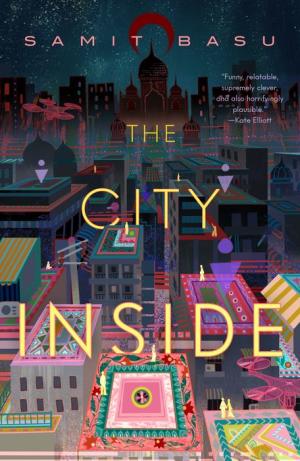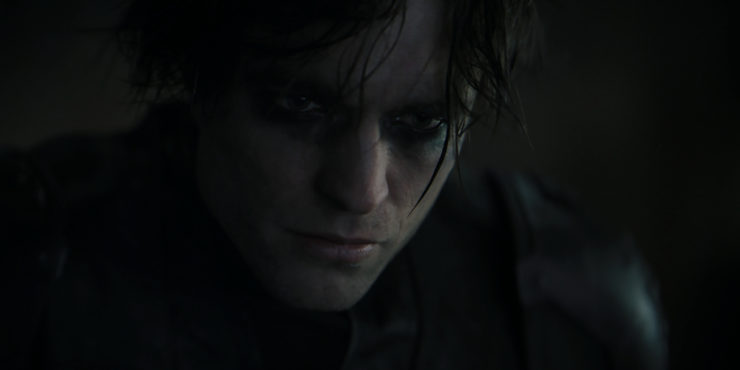We’ve had an ample amount of time to get hyped for Matt Reeves’ The Batman, since the film has been in the works in some form or another for nearly a decade now. The director turned over, the lead actor turned over, the conceptual underpinnings were retooled, and words like “emo” and “noir” got tossed around so frequently, they started to lose meaning. Several now-common hallmarks have been employed to assure audiences of the “seriousness” of this project, including its three-hour runtime and a myriad of interviews with actors and director, all talking about the torturous, exploratory method work that went into creating this array of reimagined characters.
Which is hilarious when all is said and done because, no matter how you slice it, a Batman movie is a Batman movie (is a Batman movie is a Batman movie)…
[Minor spoilers for The Batman]
The issue is clear when viewed in broad strokes: If the public is going to be subjected to a new Batman: Issue #1 film every fifteen-to-twenty years, there should be a purpose to the exercise beyond aesthetic reworking and a brand new face tooling around the Batcave. Problems with the ever-stalled DCEU aside, Ben Affleck’s tenure in the suit was a welcome change for at least avoiding these pitfalls and suggesting that the audience come to know and accept a Batman working past his prime. But The Batman isn’t interested in that kind of story. Instead, it’s interested in emulating a specific set of comics (namely the oft-namedropped Year One) and ‘70s neo-noir yarns.
Buy the Book


The City Inside
There’s nothing wrong with using those ideas as a jumping-off point, and indeed, the movie’s opening gives fans a lot to enjoy with its highly-effected detective voiceover and dingy views of Gotham City (which is once again reliably just New York with a sheen of fresh grime applied). The look and feel of the film make up its strongest pieces, particularly the manner in which Reeves and his production team make Batman’s high tech devices look old enough to belong in a film fifty years its senior. There’s a lot of enjoyable faux-practicality at work as well—consideration for how Batman would “hide” the suit as he takes a motorcycle from location to location, his clear unease at the need to use his paraglider system, Alfred’s (Andy Serkis) constant dismay over Bruce’s descent into this role he’s created for himself.
The film garners some appreciation for its unwillingness to spend ages on things that the audience doesn’t need to be reminded of or shown; Reeves is the first director to finally take a page from the Animated Series’ book and refuses to slo-mo us through the death of Thomas and Martha Wayne, or how Bruce goes about creating all of his bat-gear, or give us an endless sequence of him learning to use his various theatrical techniques to battle and frighten bad men. He’s Batman. He rolls off the assembly line with this backstory and skillset. We don’t need to know how or why every time.
What we do need to know is why the Riddler—Paul Dano, who has already given interviews alongside Reeves explaining why he bound his entire head in saran wrap for the role… a choice which is almost impossible to detect while watching his performance if you don’t already know—has decided to up and murder a bunch of powerful people in Gotham, and keeps leaving Batman tacky cards full of ciphers about it.
It’s well worth acknowledging that most of the actors in this film are expertly cast. At the center we have Robert Pattinson, who can act through that cowl better than any Batman before him, a fact that cannot be taken lightly when he spends the majority of the film in the thing. Dano, despite the cling film misfire, gives his customary unnerving all as the Riddler. Zoë Kravitz is a compelling Catwoman, even if we actually could use a little backstory on her skillset. Andy Serkis plays Alfred with a welcome gruffness, and seems far more formidable than many of his predecessors. John Turturro is a given for Carmine Falcone, and Jeffrey Wright is perhaps the first Jim Gordon who you desperately need to win the day because that man needs about eighteen stacked vacations. Barry Keoghan’s end-of-film cameo is right on in a manner that should make a set of particular actors very jealous indeed.
The only casting error to my mind is Colin Farrell’s turn at Oswald Cobblepot, which is a twofold issue: This version of the Penguin has been reimagined as a plain, old-school mobster, which effectively strips the character of everything that makes him unique. It’s then compounded by the prosthetics and fat suit they put Farrell in, yet again correlating disfigurement and weight with morality in a way that Batman villains, and cinema in general, have always overplayed. The film clearly expects us to marvel at how Farrell has “disappeared” into this role, but if he can’t do it using his own body, then it’s not the impressive transformation the filmmakers believe it to be.
There are aspects in this endless mystery that are worthy of praise and emulation, particularly the lack of focus on action sequences and more devotion to Batman’s unglamorous detective work. Though it doesn’t prevent a few key action sequences from going overlong—the film clearly wants everyone to feel like they got their money’s worth and gets distracted in presenting those high-octane moments when it finally stumbles across a reason to showcase them—the lack of laser focus on getting us to the next big fight is a welcome change of pace that more movies need to copy. There’s a lot of talking in The Batman. Brooding too, but really mostly talking, and that, too, is a welcome change from the usual formula. The advent of films like this and Dune feels like a deliberate reaction against the predictability of current blockbusters, even if both don’t quite manage to veer as far away from the format as they believe.
The Batman is a film pretending to have a lot of conversations it is emphatically not having. There are moments of insight and interest that get the barest glance before the film rushes off in search of that noir feel again, terrified of abandoning it too long for fear that the audience might start paying attention rather than simply soaking up vibes with a nod. There’s a particular bent to the story that almost seems as though it might critique Batman’s position in Gotham, or at least the Wayne family; at one point, Catwoman talks to Bruce about how the current string of murders are all about “privileged rich white guys,” and you think, oh… could this movie actually be attempting to address the core of the Batman mythos? The idea that perhaps one lone billionaire white guy beating up disenfranchised people who turn to crime out of desperation is maybe not the best way of superheroing?
The movie darts away from that thought instantly, as though it touched a hot stove by accident. Then we get an even deeper conceit buried in the story, one that suggests that Bruce Wayne’s mental health (and his family’s mental health history) might play into this desire to don a bat suit and go out into the darkness and combat crime. The idea that this pensive, slow-moving, downright talkative film might actually delve into the psychology of Bruce Wayne, his need to control uncontrollable horrors, and how this reordered his mind in increasingly damaging ways, is tantalizing in the extreme. But again, the movie scampers away from the thought like a mole rat running away from a sudden bright light.
The last hour of the film could’ve easily been shaved down to fifteen minutes, and the final action sequence is kinda goofy in spots and really begs the question of exactly how much gunfire even the best sort of body armor can take. (The answer: always one shotgun shell more.) The film lands on a new purpose for Batman, one that he comes to far too late in the narrative—the idea that perhaps he can be an inspiration rather than a warning. He spends the whole film telling people “I am vengeance,” and comes to the conclusion that he should, and can, be more.
Having said that, Batman doesn’t exchange “I am vengeance” for “I am the night,” and since they never put the two phrases together in the film, I’m irritated at its lack of use. It’s petty, but that’s my personal hill to die on. I’ll survive.
It’s too bad because the unwillingness to scratch at some deeper thoughts about Batman’s cultural positioning leaves us with… an almost-decent neo-noir knockoff. It’s fun in places. It could use more jokes, for my taste. (Batman’s dry humor is one of my favorite pieces of the character, and one that never seems to get enough screen time, not even in Bale’s sarcasm-laden take.) Which leaves us with another question entirely: Was this all a good enough reason to make another Batman film? I suppose it is, for some. They want the same idea, repackaged in new-old trappings, from a slightly different angle than the last time. The chance to see what a new set of actors will do with the roles. The Batman surely achieves that, so those folks are probably pretty happy.
But if I have to do this every fifteen or twenty years, I’m gonna need a little more than that. The next iteration at least better give me Robin.
Emmet Asher-Perrin is just gonna walk around muttering “I am the night” to themselves. You can bug them on Twitter, and read more of their work here and elsewhere.










